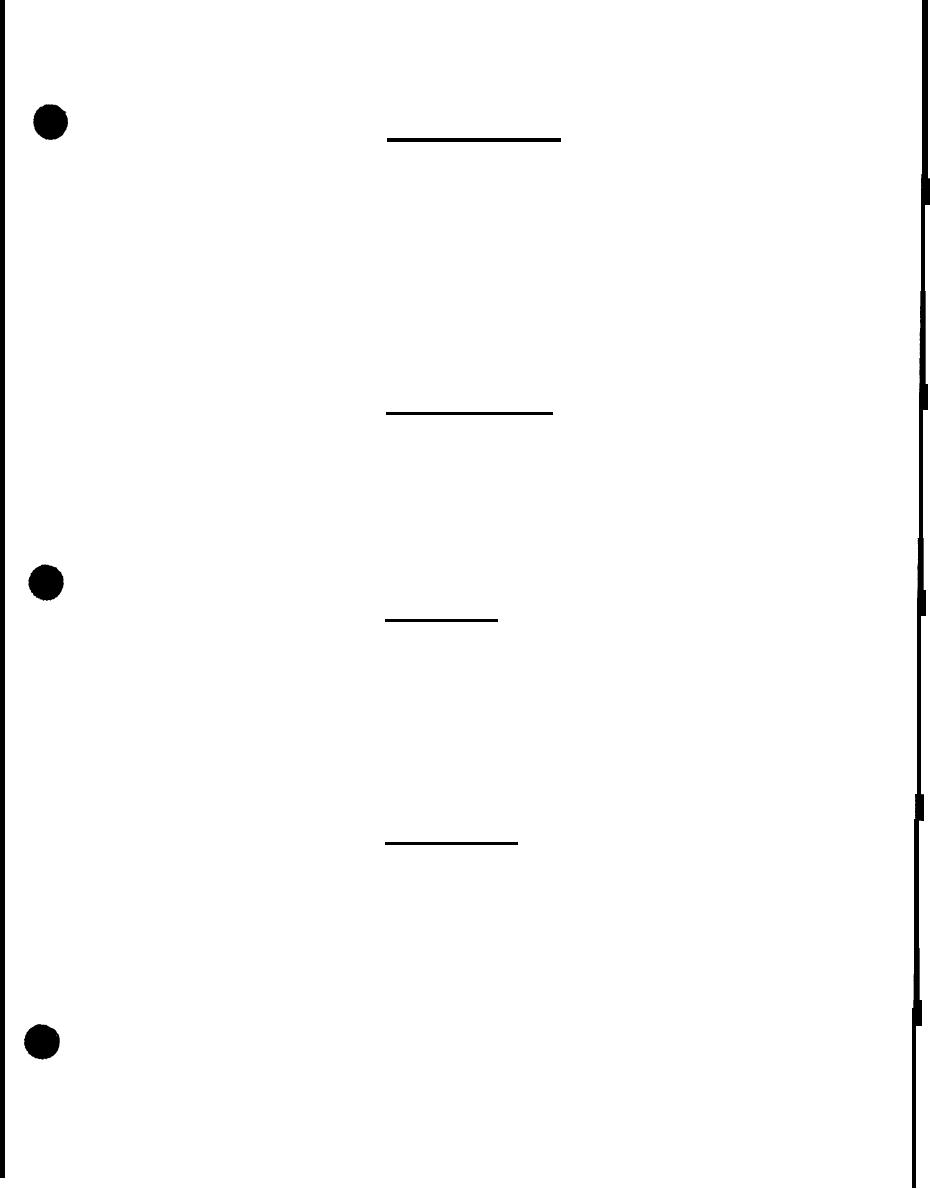 |
|||
|
|
|||
| ||||||||||
|
|  MIL-H-8891A
Self-sealing couplings - Hydraulic systems shall be
3.10.20
provided with self-sealing couplings for each engine or mechanical trans-
mission driven pump and so located that the powerplant or mechanical trans-
mission section can be readily removed for servicing. A suitable coupling
shall be used in each line going to each pump. Self-sealing couplings
shall also be provided on all hydraulically operated brake installations
where it is necessary to disconnect the brake line in order to remove the
wheel. The self-sealing coupling shall be attached to the brake, and it
shall be possible to remove the wheel without damaging the coupling. Self-
sealing couplings shall also be provided at all other points in the hydraulic
system which require frequent disassembly or, where convenient to isolate
parts of the system as in jacking and servicing one landing gear only.
Sufficient clearance shall be provided around the coupling to permit con-
nection and disconnection. Self-sealing couplings installed adjacent to
each other shall be of different size or be otherwise designed that in-
advertent cross connection of the lines cannot occur.
Airframe break points - When self-sealing couplings
3.10.20.1
are provided at airframe break points, especially in flight-control systems,
and where disconnection of such a coupling or couplings will adversely affect
the operation of any of the systems, adequate means shall be provided to pre-
vent the inadvertent disconnection of the couplings. Such means shall also
provide adequate indication when a coupling connection is incomplete. If
the means of preventing inadvertent disconnection are not absolutely posi-
tive, the system shall be so designed that a hydraulic lock resulting from
an inadvertent coupling disconnection will not be the cause of an aircraft
accident. Means shall be provided to prevent damage to the system due to
thermal expansion of the fluid if a pressure trap is created when self-
sealing couplings are disconnected.
Shuttle valves - Shuttle valves shall not be used in
3,10.21
installations in which a force balance can be obtained on both inlet ports
simultaneously which may cause the shuttle valve to restrict flow from the
outlet port. Where shuttle valves are necessary to connect an actuating
cylinder with the normal and emergency systems, the shuttle valve unit
shall be built into the appropriate cylinder head. Where the above in-
stallation cannot be made, a shuttle valve may be located at the actuator
port. In the event neither of the above installations is possible, a
length of rigid line is permissible between the cylinder port and the `
shuttle valve, provided that the rigid line and shuttle valve are firmly
attached to the actuating cylinder. Flexible hose shall not be used be-
tween the actuating cylinder port and the shuttle valve. When emergency
line venting is required, see paragraph 3.8.3.
Pressure switches - Pressure switches may be installed
3.10.22
in hydraulic systems where the regulation of hydraulic pressure is requited
by controlling an electric-motor-driven pump or other applications approved
by the procuring activity. Adequate precautions shall be taken to prevent
chatter or cutoff. Pressure switches shall be approved by the procuring
activity.
27
|
|
Privacy Statement - Press Release - Copyright Information. - Contact Us |